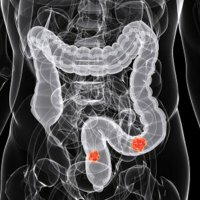Bronchial carcinoids
 The very concept of "carcinoid" was first proposed and introduced into science as early as the beginning of the 20th century. It comes from the Greek karkinos - cancer and eidos - a kind. And already from the etymology of the word it becomes clear that this is a specific type of cancer tumor. It was precisely such unknown new growths that had been discovered before that time by the German professor Oberndorfer. Carcinoids are benign tumors by nature, but are prone to metastasis, which in turn complicates the course of the disease.
The very concept of "carcinoid" was first proposed and introduced into science as early as the beginning of the 20th century. It comes from the Greek karkinos - cancer and eidos - a kind. And already from the etymology of the word it becomes clear that this is a specific type of cancer tumor. It was precisely such unknown new growths that had been discovered before that time by the German professor Oberndorfer. Carcinoids are benign tumors by nature, but are prone to metastasis, which in turn complicates the course of the disease.
What are carcinoids?
The disease is quite rare and its distinctive feature is the slow development, i.e. the slow growth of tumors that can affect absolutely every human body. In most cases, the disease affects the gastrointestinal tract( approximately 70% of cases) and only in other cases affects the pancreas, liver, gall bladder, ovaries and human bronchi.
The amount of carcinoid formed can range from 0.1 to 8 cm in diameter. It has a dense and elastic structure and varies in color from light yellow to yellow-brown in color, with a grayish tinge. Its slow development significantly complicates the diagnosis at an early stage, which in turn leads to complications of the disease course.
There are two types of carcinoid - non-functioning and functioning, which is accompanied by carcinoid syndrome. In the first case, the disease is virtually asymptomatic and painful sensations and nonspecific bleeding may appear only in later stages. Detection of it, as a rule, occurs completely randomly( in passing), during a general examination of the body. The functioning carcinoid, due to a specific syndrome, is diagnosed with a greater degree of reliability, since the stage of growth and development of metastases( approximately 40% of cases) occurs. The thing is that growing tumor cells begin to release in large quantities such substances as serotonin, histamine and kinin. These substances enter the bloodstream, which in turn leads to carcinoid syndrome - fever, tachycardia, a sharp drop in blood pressure and hyperemia of the human skin. Seizures may occur spontaneously or due to the influence of certain factors, such as stress, alcohol intake or simply excessive consumption of spicy food. In duration, seizures are also divided into short-term( from 20 minutes to 3 hours) and long( up to several days).Long-lasting seizures are dangerous for human health, as they lead to the defeat of the heart valves.
Symptoms in the presence of bronchial carcinoids
As noted earlier, carcinoids rarely affect the bronchi, and this disease is most common in older people( 40-50 years old).On the mucous membrane of the bronchi are formed and slowly grow neuroendocrine tumors. In most cases( approximately 90%) - it is small in size( up to several millimeters) neoplasms, which are mainly localized in places of chronic inflammation or scarring and affect large bronchi. In other cases( approximately 10%), carcinoids can lead to blockage of the bronchial lumen and reach rather large dimensions( 3-4 cm in diameter).
Very often the symptoms of bronchial carcinoids are confused with the symptoms of bronchial asthma - the same shortness of breath, coughing, wheezing and shortness of breath. But thanks to carcinoid syndrome, the disease can be diagnosed more accurately.
The main symptoms include:
- sudden attacks of suffocation. And, unlike asthmatic, they occur at any time of the day and can be very long( up to 30 min.);
- hyperemia of the skin of the face and upper body, which over time is localized on the hands;
- enlargement of the cervical veins;
- tachycardia;
- cyanosis;
- after an attack often develops a headache.
All these symptoms are caused by the presence in the blood of a patient with serotonin, histamine and kinin - substances that secrete karyziones in their development. At later stages there may be hemoptysis and prolonged pressing pains in the chest, there may be noises in the heart - this is due to damage to the heart valve, due to, again, an overabundance of serotonin.
Diagnosis of the disease
In the presence of classic symptoms, in the shortest possible time it is necessary to conduct a thorough diagnosis. Begin it, as a rule, with the definition of serotonin level. You can also assign a sample of calcium or norepinephrine, which, in case of redness of the face and upper body, may also indicate the presence of the disease. And, of course, traditional - radiography, tomography, ultrasound and magnetic resonance imaging - with which you can not only detect the presence of a tumor, but also determine the stage of the disease and the degree of development of metastases.
Treatment of bronchial carcinoids
Unfortunately, the only method of treatment at the moment is only surgical removal. The difference is only in the scale of its application.
Lobectomy -( prescribe more often) the removal of the lobe of the lung that has undergone the spread of the disease.
Segmentectomy - removal of the lung segment by excision. Usually prescribed when the process of formation of bronchial carcinoids proceeds separately, without spreading the focus. This kind of surgical intervention is rather sparing, since only one( or several) segments are removed, which by their nature are independent units.
Pneumonectomy is a surgical procedure in which the lung is removed completely. The operation is rather complicated, since it is necessary not only to remove the lung completely, but also to properly clean its root and adipose tissue together with the lymph nodes. Appoint such a method is extremely rare and only at either the advanced stage of the disease, or with a large area of lung damage.
Bronchoplasty resection is a very delicate and complex method of surgical intervention, which, although not already at the development stage, is nevertheless frequently discussed and challenged by specialists. The essence of it is that part of the affected bronchus is removed by a straight cut through the cartilaginous part. The healthy parts are again combined and sewn together. The operation is aimed primarily at maximizing the preservation of a healthy organ, which, in the case of insufficient diagnosis or misdiagnosis, can aggravate the patient's condition.
After the surgical removal, all patients are prescribed chemotherapy.
Radiation therapy, as a rule, is prescribed by an inoperable patient or those with carcinoids that can not be completely removed.
Prognosis of the disease
It is difficult to predict the outcome of the disease. In many respects it depends on the stage at which it was diagnosed and the extent of the lesion. But we can say with confidence that without treatment, patients do not live more than three to four years. But in time and successfully carried out treatment can prolong life for 10-15 years, and in 5% of cases and more years.
Even if the patient has already treated a very advanced stage of the disease, then with the right treatment, the specialists extend his life for 5-7 years( on average in 60% of cases).



